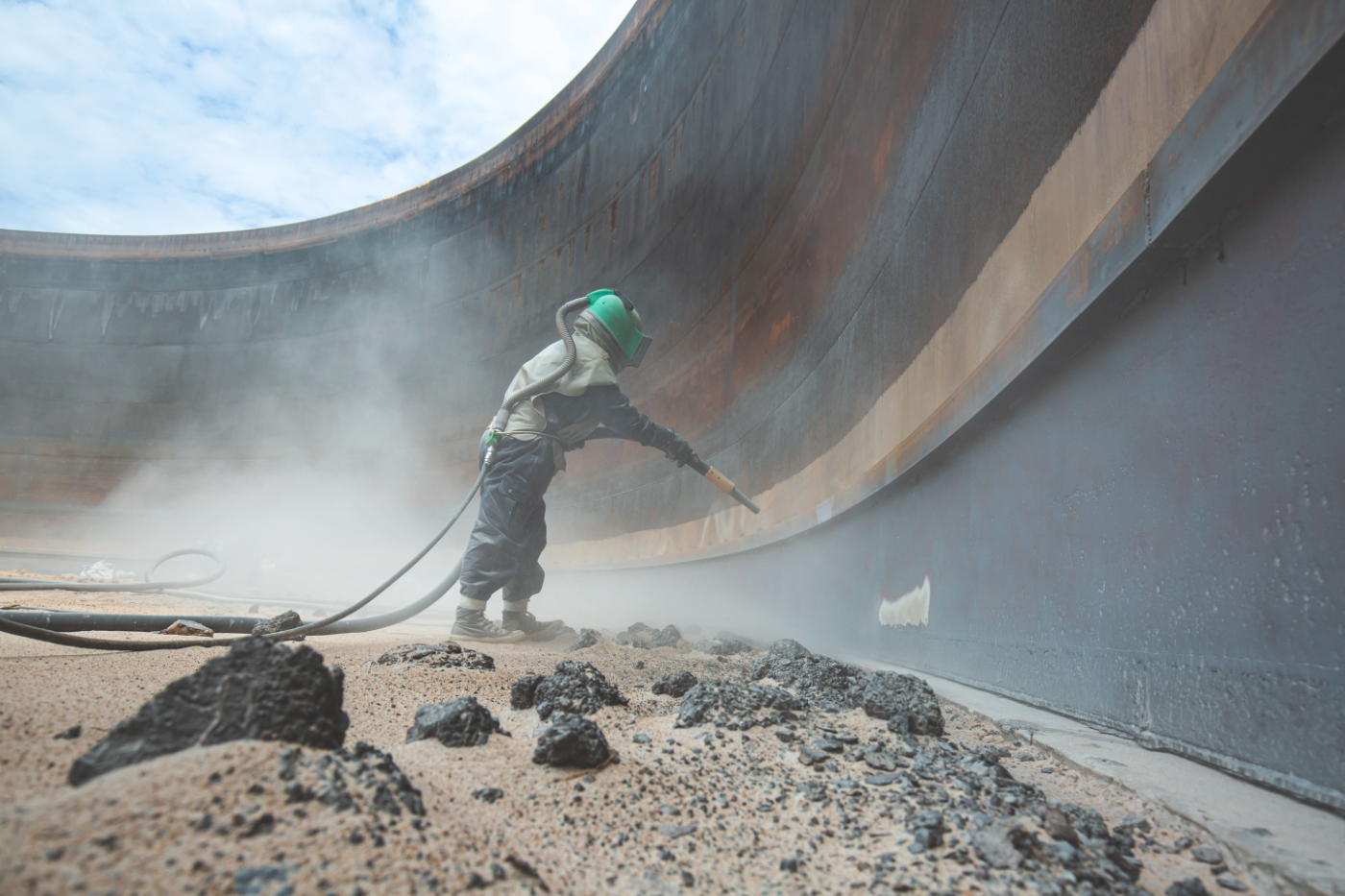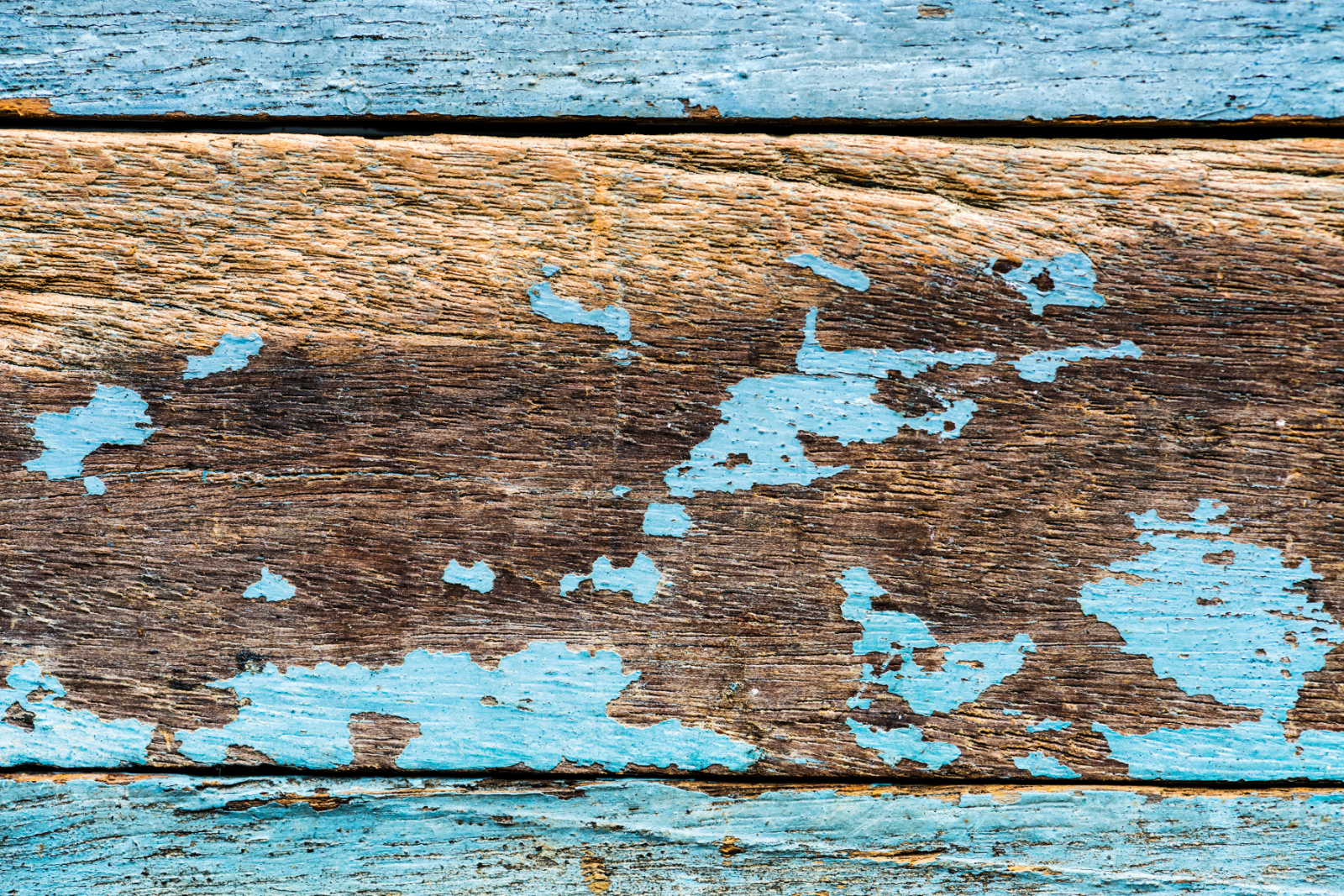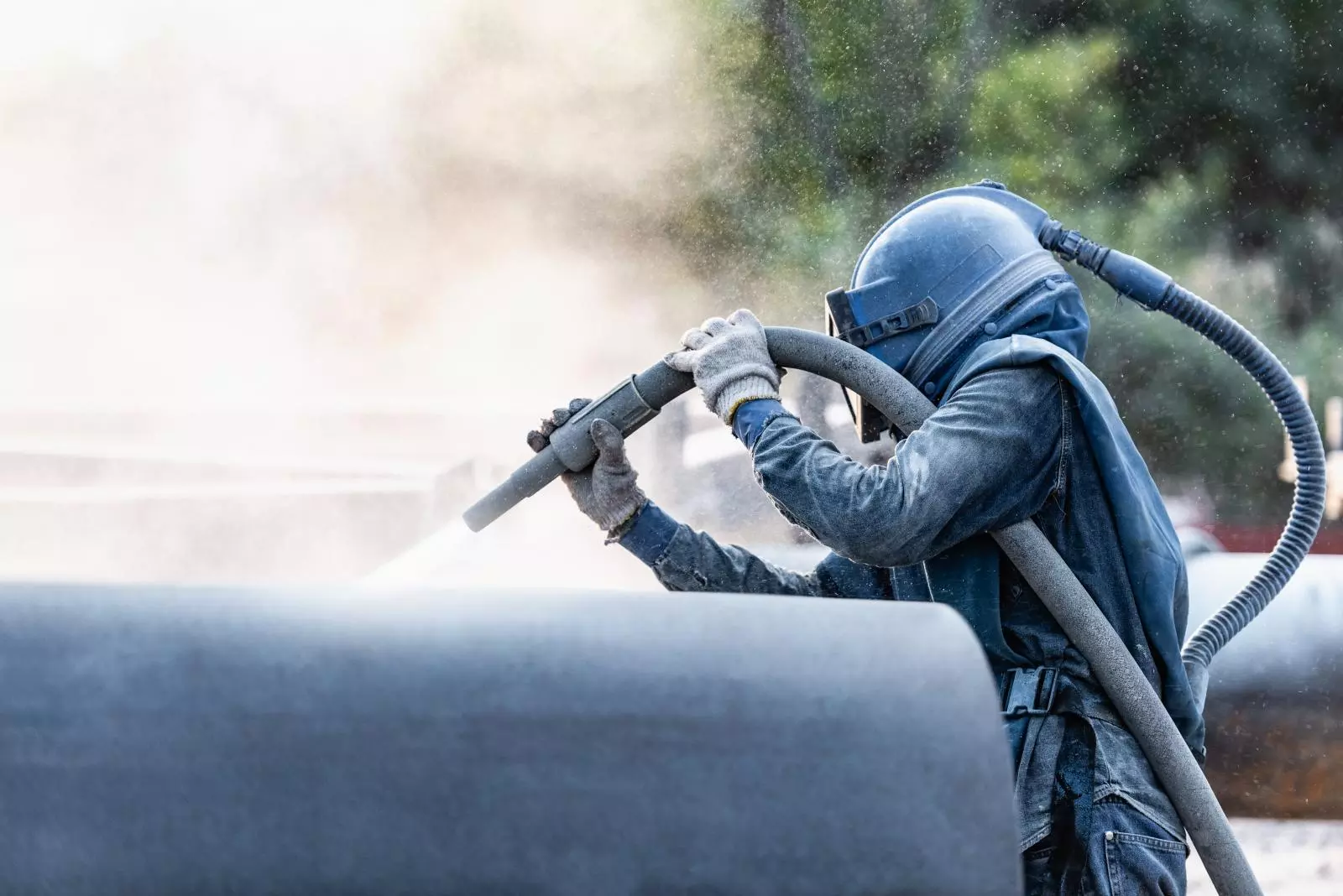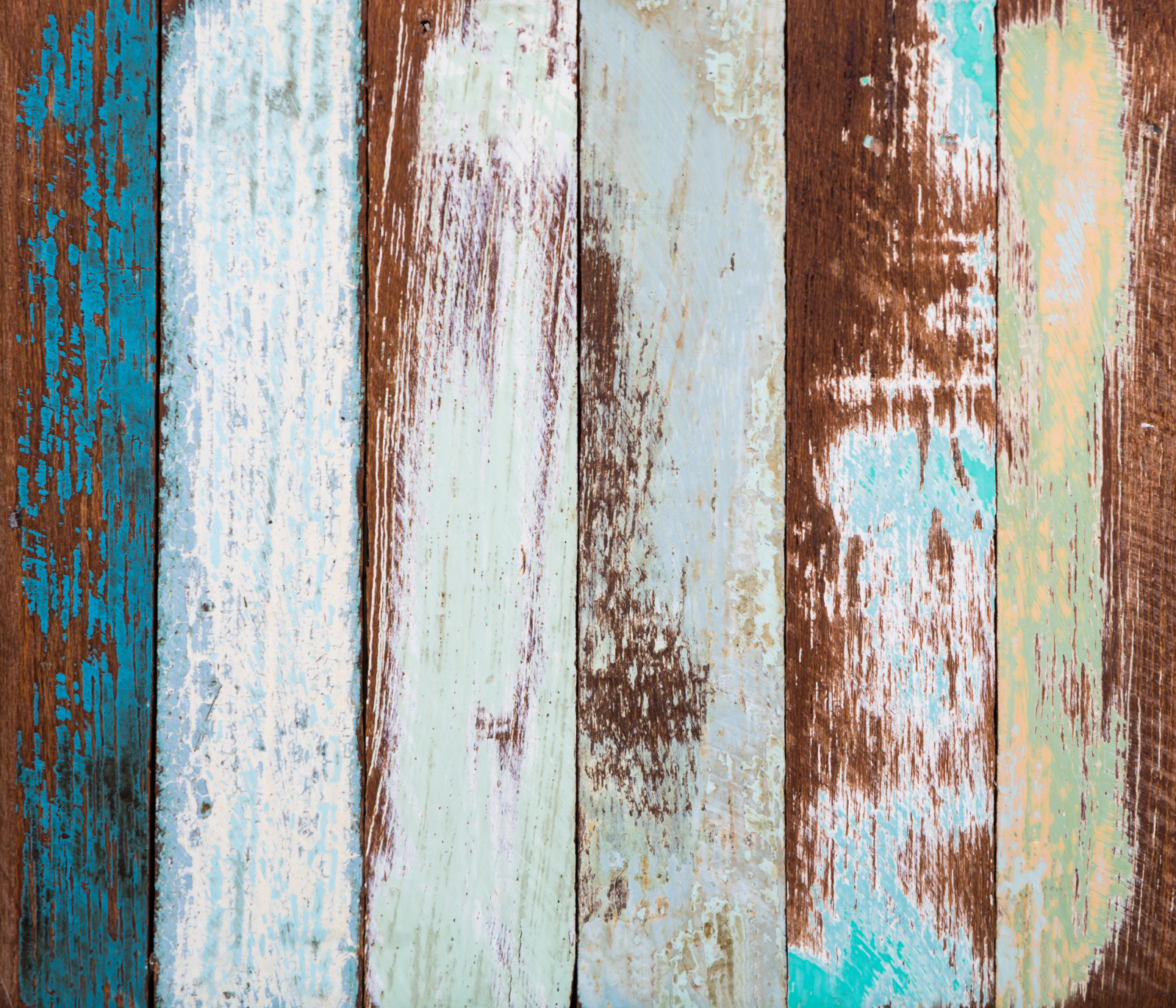Are you asking: what blasting media removes paint from wood? RM Specialist Blast Cleaning offer timber beam cleaning throughout Croydon, Ealing, Wandsworth and London. Find out if you can sandblast paint on wood and choosing a sandblasting abrasive for wood.
Can I Sandblast Paint on Wood?
Whether you're renovating a house or repainting a piece of furniture, sandblasting is a great way to strip the existing coat. It leaves a clean surface ready for a fresh coat of paint, allowing you to get your wooden surfaces looking brand new again.
If the paint on the woodwork is particularly old, it may be a little more difficult. But using a sandblaster will eventually remove the old paint. And don't forget to refinish the wooden surface once you're finished. Sandblasters aren't delicate, and you'll need to add a new finish or coat of paint to rejuvenate the wood.
How Sandblasting Works
Sandblasting equipment removes paint and other coatings from different surfaces. It does this by firing a blasting media at the surface at high speeds using pressurised sandblasting equipment. Depending on the size and type of blasting media you choose, it can be a fairly aggressive way to strip coatings from surfaces.
It's much easier than stripping paint or coatings by hand. This also means you can strip these coatings much quicker. However, if there are multiple layers of paint on the surface, or that paint is very old, it can take longer. But for most paint stripping needs, sandblasting is the ideal way to do it.

Choosing a sandblasting abrasive for wood
Choosing the right sandblasting media is essential. If you're working with wood, you won't want to choose anything too aggressive. For example, when stripping paint or coatings from metal, you can use small metal balls which you'll fire from the sandblasting equipment. However, this will be far too harsh for wood.
The durability of the surface and the hardness of the media are the two most important things to consider. You'll want to use softer media like soda blasting when blasting softer materials like wood. This media is less abrasive and won't etch or damage the underlying material while removing the top layer of paint.

Which media are best for sandblasting wood?
Again, sandblasting is common when working with materials like metal. It's often used to remove rust and other unwanted coatings or abnormalities from surfaces. However, wood is much softer than these materials, and your blast media needs to account for this.
For tougher materials, the most common blast media includes aluminium oxide and garnet. These are fantastic media that efficiently remove layers of paint and coatings from the surface of these materials. However, they are incredibly tough, and will likely affect the material itself when used on wood.
Firing a pressurised stream of tough media at wood can lead to significant damage. At high speeds, these media can even cut through wood completely. Even if you avoid this, you'll likely find the surface of the wood is textured, blown out or left uneven once you've finished blasting.
Using a softer abrasive and a gentler blasting technique will prevent this type of damage. You need to handle wood much more carefully, which can take more time. Especially if the coats of paint you want to remove are thick or there are many layers. However, taking your time and using the right media means your wood will be in better shape when you're finished.
Again, soda blasting is one fantastic option. It's soft enough not to cause any damage to the wood but will easily remove the top layers of paint. Crushed walnut shells are another option, as they are soft enough to remove the layers of paint without damaging the wood.
Baking soda (sodium bicarbonate) is the softest blasting media you can find, and also one of the most versatile. Alongside removing paint, soda blasting can also remove stubborn dirt, rust and other coatings from the surfaces of soft materials.
For general cleaning, soda blasting is the best option. But, given its softer nature, soda blasting won't be as efficient as other media. You'll also be limited to blasting smaller areas slowly. But, again, this is vital when working with softer materials like wood.
When to Use Sandblasting for Paint Removal
Sandblasting is much easier and quicker than sanding by hand. It saves time and energy, especially when you want to remove paint from a large area. It also gives you more control over the surface you're cleaning, with specific settings available for different blast media and surfaces.
It's also ideal for materials with uneven surfaces. If the material you want to clean has hidden areas that would be impossible to clean by hand, sandblasting can solve this. You can reach any areas you need with blasting equipment and the right media.

Safety Considerations with Sandblasting

Sandblasting can be incredibly hazardous. The tiny particles of blast media and flakes of paint should not be breathed in. Therefore, you'll want to use a professional respirator as a standard safety precaution. Anyone working in the blasting area will need this and other safety equipment.

Goggles are the next thing you'll need. These tiny hazardous particles can get into your eyes and cause damage. Therefore, you'll need tight-fitting eye protection. At a stretch, you might be able to use swimming goggles or a diving mask, but ensure they can keep these dangerous particles out of your eyes.

You'll also need to consider your clothing. Particles moving at high speed can cause injury, and you should wear a full abrasive blast suit whenever you're sandblasting. Alongside your full-length clothing, close-toed shoes or boots are also necessary.

You might want to include a bandana over your face for extra protection. This is the minimum amount of protective clothing you'll need when sandblasting. Blast media and dust can get into your clothing if it isn't fully closed off, which can irritate your skin and cause damage.

You'll also need to consider your clothing. Particles moving at high speed can cause injury, and you should wear a full abrasive blast suit whenever you're sandblasting. Alongside your full-length clothing, close-toed shoes or boots are also necessary.

You might want to include a bandana over your face for extra protection. This is the minimum amount of protective clothing you'll need when sandblasting. Blast media and dust can get into your clothing if it isn't fully closed off, which can irritate your skin and cause damage.
Do you require timber blast cleaning in London or throughout the UK? Contact us on our phone number or via email for further information or advice. If you are interested in a dustless blasting service, RM Specialist Blast Cleaning is always happy to help and assist you.

